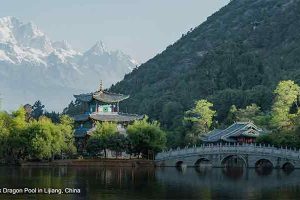
Americans dazzled by solar eclipse
bdmetronews Desk ॥ The stars came out in the middle of the day, zoo animals ran in agitated circles, crickets chirped, birds fell silent and a chilly darkness settled upon the land Monday as the U.S. witnessed its first full-blown, coast-to-coast solar eclipse since World War I.
Millions of Americans gazed in wonder at the cosmic spectacle, with the best seats along the so-called path of totality that raced 2,600 miles (4,200 kilometers) across the continent from Oregon to South Carolina.
“It was a very primal experience,” Julie Vigeland, of Portland, Oregon, said after she was moved to tears by the sight of the sun reduced to a silvery ring of light in Salem.
It took 90 minutes for the shadow of the moon to travel across the country. Along that path, the moon blotted out the midday sun for about two wondrous minutes at any one place, eliciting oohs, aahs, whoops and shouts from people gathered in stadiums, parks and backyards.
It was, by all accounts, the most-observed and most-photographed eclipse in history, documented by satellites and high-altitude balloons and watched on Earth through telescopes, cameras and cardboard-frame protective eyeglasses.
In Boise, Idaho, where the sun was more than 99 percent blocked, the street lights flicked on briefly, while in Nashville, Tennessee, people craned their necks at the sky and knocked back longneck beers at Nudie’s Honky Tonk bar.
Passengers aboard a cruise ship in the Caribbean watched it unfold as Bonnie Tyler sang her 1983 hit “Total Eclipse of the Heart.”
Several minor-league baseball teams — one of them, the Columbia Fireflies, outfitted for the day in glow-in-the-dark jerseys — briefly suspended play.
At the White House, despite all the warnings from experts about the risk of eye damage, President Donald Trump took off his eclipse glasses and looked directly at the sun.
The path of totality, where the sun was 100 percent obscured by the moon, was just 60 to 70 miles (96 to 113 kilometers) wide. But the rest of North America was treated to a partial eclipse, as were Central America and the upper reaches of South America.
by ap






